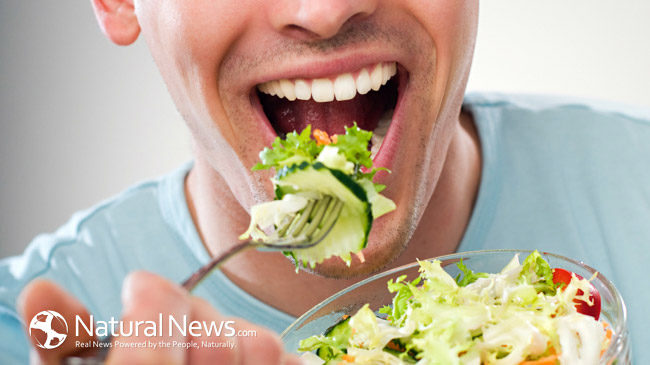A study has linked hurried eating with increased calorie consumption, finding that both overweight people and those of a normal weight took in fewer calories when they ate slowly.(1) According to the research, which was published online in the Journal of the Academy of Nutrition and Dietetics, overweight individuals consumed 58 percent less calories and normal weight people ingested 88 percent fewer calories when they enjoyed a meal at a slow pace. Both groups ate the same meal during the study.
Through the years, several theories about the speed in which people should eat their meals have surfaced, mostly focusing on the time spent eating an entire meal and the duration of chewing per bite as it pertains to saliva flow and snacking tendencies later in the day.
Slower eating advice through the years
In Victorian times, self-taught nutritionist Horace Fletcher advised chewing food 100 times per minute prior to swallowing, often saying that “Nature will castigate those who don’t masticate.”(1,2) In other words, it was his opinion that those who didn’t chew their food well would face detrimental health consequences in the future. However, many people take issue with the idea of chewing food the number of times he recommends, often focusing instead on pausing in between bites while enjoying a meal.
These days, many experts note the importance behind proper saliva stimulation, which occurs during the chewing process, and health. For example, when saliva is stimulated, it’s less likely that oral health issues such as dry mouth and enamel erosion will occur.(3) Proper chewing also allows food to be digested with more ease, leading to less stress on the body.
When it comes to the pace of eating, the most commonly-held notion is that it takes the brain approximately 20 minutes to register a feeling of fullness. This is why many experts suggest slowing down so as to not overeat.(3) “Because it takes about 20 minutes for the brain to realize that the stomach is full, eating more slowly may help prevent overeating,” says Marisa Moore, RD, National Spokesperson for the American Dietetic Association. “Don’t keep eating until your fullness is uncomfortably obvious. Instead, take time out to put your fork or spoon down between bites and have a sip of water while observing the physical sensations of your stomach.”(3)
Technology as a reminder to control pace of eating
Today, there’s an app for just about everything, so it’s no surprise that there’s one called “Eat Slower,” which allows the user to select a preferred sound to go off at pre-selected next-bite intervals.(5) It’s thought that the sound will help the user to become more mindful of their eating pace.
Furthermore, something called the “HAPIfork” is a twist on the regular utensil, vibrating if less than 10 seconds transpire from one bite to the next.(6)
Sources for this article include:
(1) http://news.therawfoodworld.com/studies-show-eating-slowly-chewing-thoroughly-will-benefit-health/
(2) http://www.ncbi.nlm.nih.gov/pubmed/9693596
(3) http://www.everydayhealth.com/fitness-motivation/feel-full.aspx
(5) http://www.huffingtonpost.com/2014/04/20/apps-for-weight-loss_n_5134969.html
(6) http://www.flabbyroad.com/blog/good-vibrations-fork-it-over-or-not





